-
 bitcoin
bitcoin $101752.865364 USD
-1.09% -
 ethereum
ethereum $3382.985899 USD
-1.38% -
 tether
tether $0.999658 USD
0.04% -
 xrp
xrp $2.272505 USD
-1.51% -
 bnb
bnb $989.089004 USD
0.14% -
 solana
solana $156.962612 USD
-3.08% -
 usd-coin
usd-coin $0.999776 USD
0.01% -
 tron
tron $0.290786 USD
-0.69% -
 dogecoin
dogecoin $0.174594 USD
-2.86% -
 cardano
cardano $0.560085 USD
-3.55% -
 hyperliquid
hyperliquid $40.023704 USD
-5.75% -
 chainlink
chainlink $15.324649 USD
-2.78% -
 bitcoin-cash
bitcoin-cash $493.576540 USD
-3.52% -
 zcash
zcash $571.320038 USD
-12.05% -
 stellar
stellar $0.280066 USD
-4.26%
The Pro's Guide to Managing a High-Leverage Trading Portfolio.
Leverage in crypto trading amplifies both gains and risks, with high multiples like 125x demanding strict risk management, stop-losses, and emotional discipline to avoid liquidation.
Nov 01, 2025 at 12:19 pm
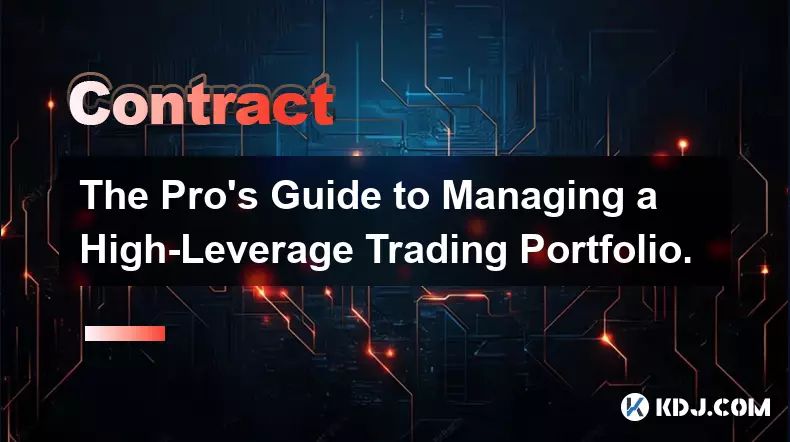
Understanding the Mechanics of Leverage in Crypto Trading
1. Leverage allows traders to control a larger position using a fraction of the capital required for a full spot trade. In the crypto markets, leverage can range from 2x to as high as 125x depending on the exchange and asset pair. This amplifies both potential gains and losses, making it a double-edged sword.
2. High-leverage trading is particularly common in perpetual futures contracts, where traders can go long or short on assets like Bitcoin or Ethereum without owning them. The funding rate mechanism ensures prices stay close to the spot market but introduces additional cost considerations over time.
3. Margin types—cross margin and isolated margin—determine how much of your account balance is at risk. Isolated margin limits exposure to a specific amount allocated per trade, while cross margin uses the entire account balance, increasing liquidation risks during volatile swings.
4. Liquidation occurs when the price moves against a leveraged position beyond a threshold, causing the exchange to automatically close the trade. Understanding maintenance margin requirements helps prevent unexpected closures that wipe out capital.
5. Different exchanges offer varying levels of leverage and risk controls. Choosing platforms with robust risk engines, transparent fee structures, and reliable liquidation mechanisms is essential for managing high-leverage exposure effectively.
Risk Management Strategies for Leveraged Positions
1. Position sizing should be calculated based on account size and acceptable risk per trade, typically no more than 1%–2% of total equity. Even with high leverage available, prudent traders limit their actual exposure to avoid catastrophic drawdowns.
2. Setting tight stop-loss orders is crucial when using leverage above 10x. These predefined exit points help cap losses before they spiral out of control due to rapid price movements common in cryptocurrency markets.
3. Traders often overlook the impact of slippage during high-volatility events such as macroeconomic announcements or exchange outages. Limiting order types and avoiding trading during known volatility spikes reduces execution risk.
4. Diversifying across uncorrelated assets or strategies—even within a leveraged portfolio—can reduce systemic risk. Over-concentration in a single altcoin or sector increases vulnerability to targeted market corrections.
5. Regularly monitoring open positions and adjusting parameters based on changing market conditions prevents complacency. Automated alerts or third-party tools can assist in maintaining oversight without constant screen time.
Psychological Discipline and Emotional Control
1. The allure of quick profits under high leverage can trigger impulsive decisions. Successful traders adhere to a predefined trading plan that outlines entry, exit, and risk parameters before initiating any position.
2. Avoid revenge trading after a loss, especially one caused by excessive leverage. Emotionally driven attempts to recover losses often lead to larger drawdowns and erode long-term consistency.
3. Keeping a detailed trade journal helps identify behavioral patterns and reinforces accountability. Reviewing past trades objectively reveals whether outcomes were due to strategy or luck.
p>4. Taking breaks between trading sessions prevents fatigue-induced errors. Extended focus under pressure clouds judgment, particularly when managing multiple leveraged positions simultaneously.
5. Confidence must be balanced with humility. Markets frequently defy expectations, and recognizing personal limitations in forecasting short-term price action fosters sustainable risk-taking behavior.
Common Questions About High-Leverage Crypto Trading
What happens when a leveraged position gets liquidated?When a leveraged position breaches its maintenance margin level, the exchange automatically closes it to prevent further losses. Depending on the platform, partial or full liquidation may occur, and traders could lose their entire margin allocation for that trade.
Can I use leverage in a bear market?Yes, leverage can be applied to short positions allowing traders to profit from declining prices. However, shorting with high leverage carries significant risk, especially during sharp rallies or squeeze events triggered by low liquidity.
How do funding rates affect leveraged trades?Funding rates are periodic payments exchanged between long and short traders on perpetual contracts. Holding a position over time incurs these costs, which can accumulate and eat into profits, particularly in ranging markets.
Is high leverage suitable for beginners?High leverage is generally not recommended for inexperienced traders. The complexity of margin mechanics, combined with fast-moving crypto markets, increases the likelihood of substantial losses without proper education and practice in simulated environments.
Disclaimer:info@kdj.com
The information provided is not trading advice. kdj.com does not assume any responsibility for any investments made based on the information provided in this article. Cryptocurrencies are highly volatile and it is highly recommended that you invest with caution after thorough research!
If you believe that the content used on this website infringes your copyright, please contact us immediately (info@kdj.com) and we will delete it promptly.
- Ripple (XRP) in 2026: Hold or Fold? A Look at XRP's Future and Emerging DeFi Alternatives
- 2025-11-08 18:35:01
- Zcash ZEC Coin Price Explosion: From Privacy Niche to Center Stage
- 2025-11-08 18:55:01
- Berachain Price Prediction: Navigating the Honeycomb Hype in Crypto
- 2025-11-08 18:55:01
- Arthur Hayes, Gold, and Bitcoin: A Modern Monetary Trinity?
- 2025-11-08 19:15:01
- Shiba Inu's Next Move: Navigating a Shifting Market
- 2025-11-08 19:20:01
- Pakistan's Crypto Crossroads: Balancing Opportunity with Asset-Backed Realities
- 2025-11-08 19:20:01
Related knowledge

What is a state machine and how can a contract be designed as one?
Nov 08,2025 at 02:19pm
Understanding State Machines in Blockchain Context1. A state machine is a computational model used to design systems that transition between defined s...

How do you upgrade a smart contract using the UUPS proxy pattern?
Nov 09,2025 at 01:19am
Understanding the UUPS Proxy Pattern in Smart Contract DevelopmentThe UUPS (Universal Upgradeable Proxy Standard) pattern has become a cornerstone in ...
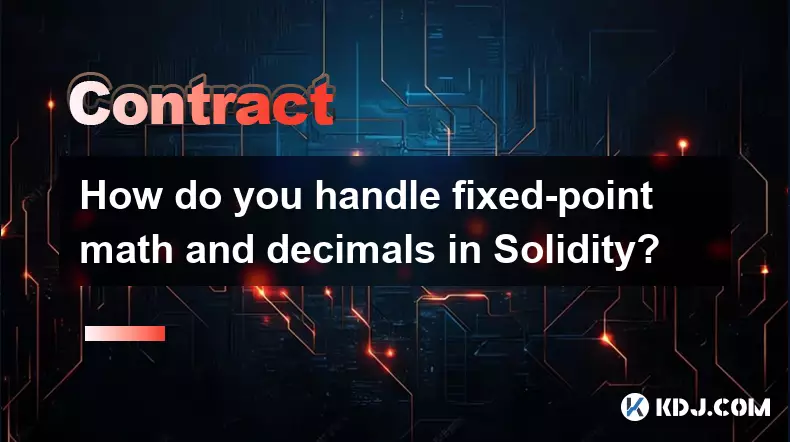
How do you handle fixed-point math and decimals in Solidity?
Nov 08,2025 at 11:40pm
Understanding Fixed-Point Arithmetic in Solidity1. Solidity does not natively support floating-point numbers, which means developers must rely on fixe...
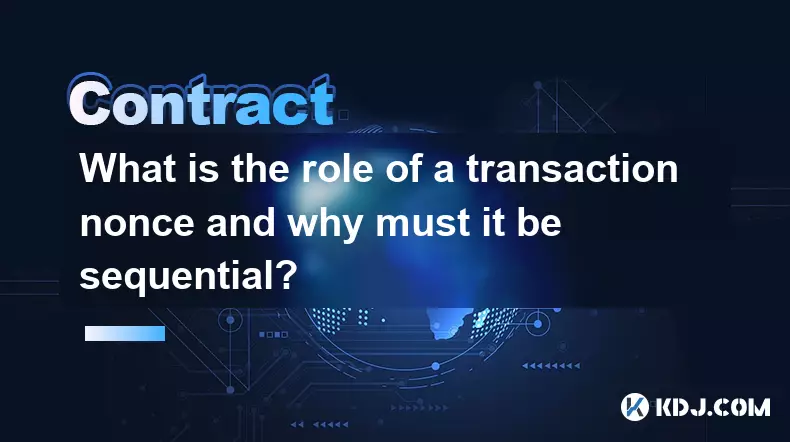
What is the role of a transaction nonce and why must it be sequential?
Nov 09,2025 at 01:00am
Understanding the Transaction Nonce in Blockchain Systems1. A transaction nonce is a number used once, associated with a user's account in blockchain ...
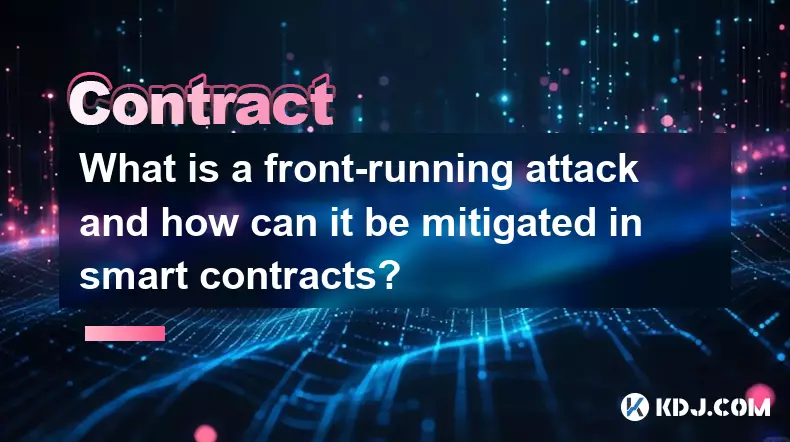
What is a front-running attack and how can it be mitigated in smart contracts?
Nov 08,2025 at 11:20am
Understanding Front-Running in Blockchain Transactions1. In the context of blockchain and decentralized applications, a front-running attack occurs wh...
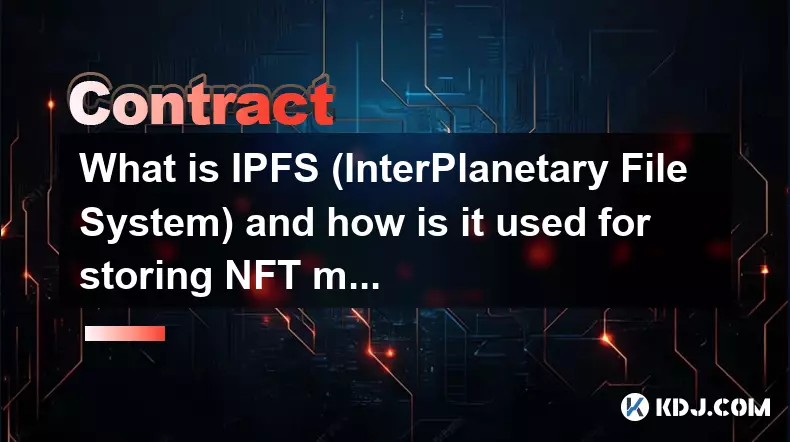
What is IPFS (InterPlanetary File System) and how is it used for storing NFT metadata?
Nov 08,2025 at 06:00pm
Understanding IPFS and Its Role in Decentralized Storage1. The InterPlanetary File System (IPFS) is a peer-to-peer hypermedia protocol designed to mak...

What is a state machine and how can a contract be designed as one?
Nov 08,2025 at 02:19pm
Understanding State Machines in Blockchain Context1. A state machine is a computational model used to design systems that transition between defined s...

How do you upgrade a smart contract using the UUPS proxy pattern?
Nov 09,2025 at 01:19am
Understanding the UUPS Proxy Pattern in Smart Contract DevelopmentThe UUPS (Universal Upgradeable Proxy Standard) pattern has become a cornerstone in ...

How do you handle fixed-point math and decimals in Solidity?
Nov 08,2025 at 11:40pm
Understanding Fixed-Point Arithmetic in Solidity1. Solidity does not natively support floating-point numbers, which means developers must rely on fixe...

What is the role of a transaction nonce and why must it be sequential?
Nov 09,2025 at 01:00am
Understanding the Transaction Nonce in Blockchain Systems1. A transaction nonce is a number used once, associated with a user's account in blockchain ...

What is a front-running attack and how can it be mitigated in smart contracts?
Nov 08,2025 at 11:20am
Understanding Front-Running in Blockchain Transactions1. In the context of blockchain and decentralized applications, a front-running attack occurs wh...

What is IPFS (InterPlanetary File System) and how is it used for storing NFT metadata?
Nov 08,2025 at 06:00pm
Understanding IPFS and Its Role in Decentralized Storage1. The InterPlanetary File System (IPFS) is a peer-to-peer hypermedia protocol designed to mak...
See all articles





















![The Graph Price Prediction [GRT Crypto Price News Today] The Graph Price Prediction [GRT Crypto Price News Today]](/uploads/2025/11/07/cryptocurrencies-news/videos/690d4df44fe69_image_500_375.webp)



















































